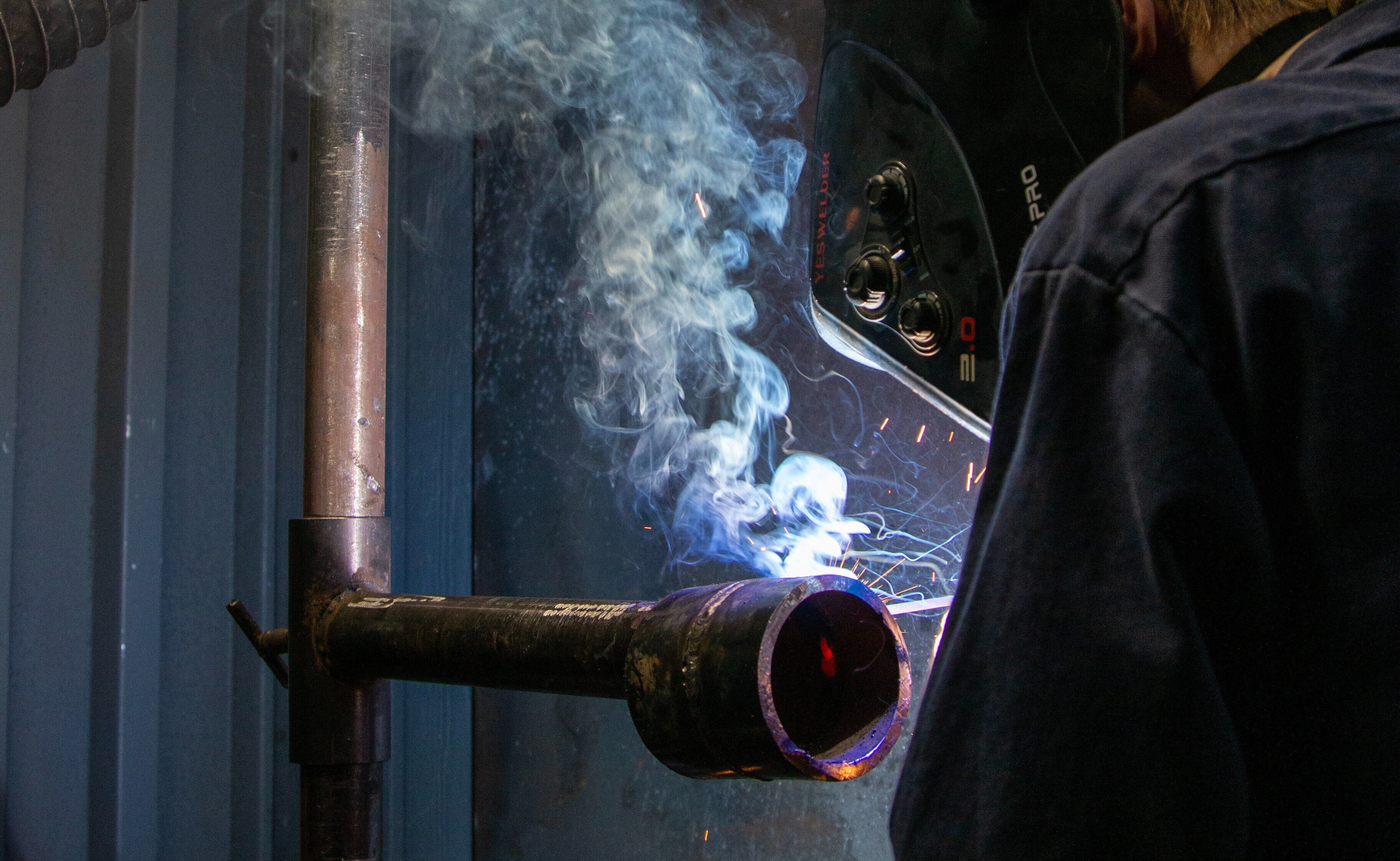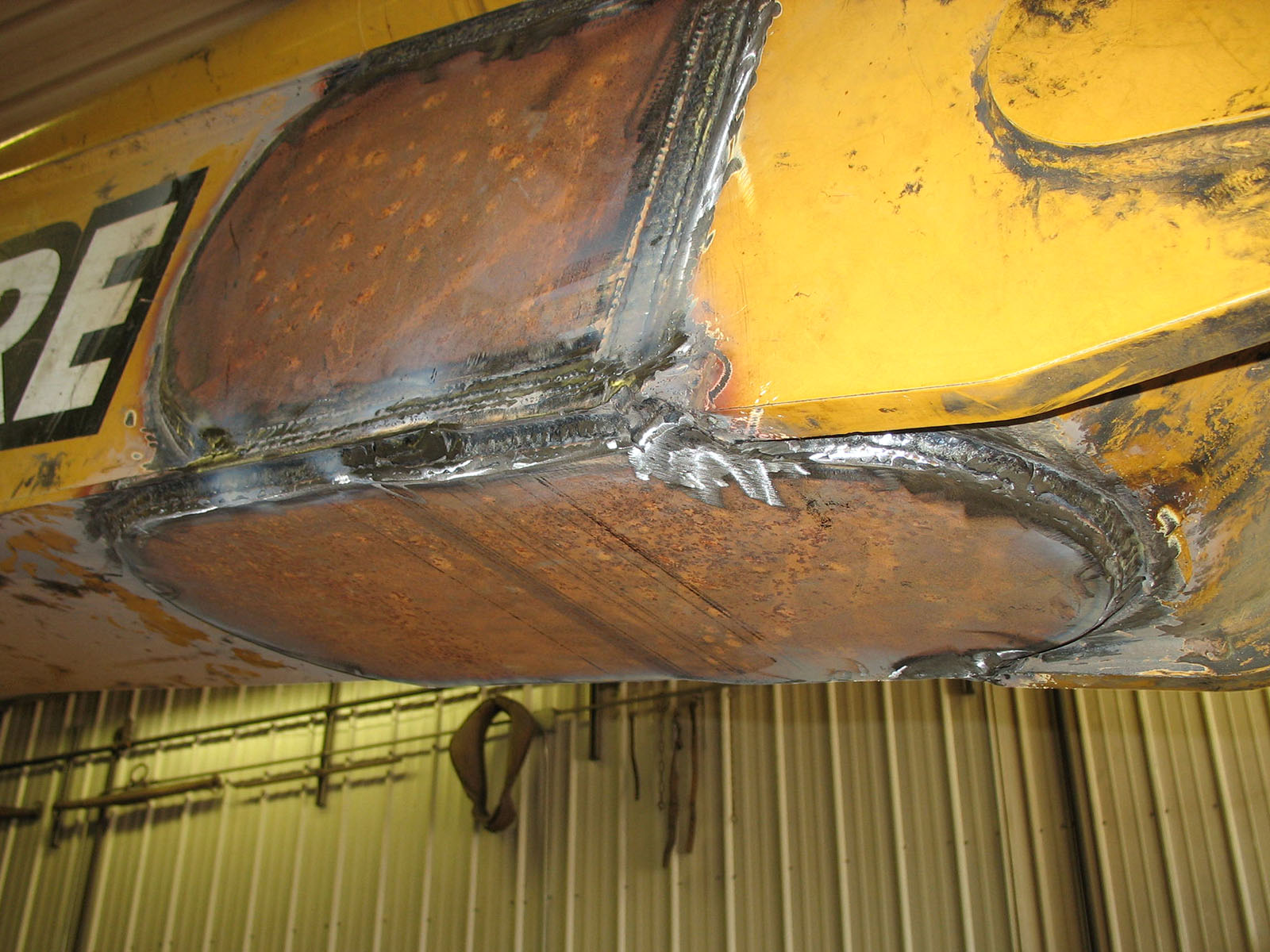Common Welding Fixing Issues and Exactly How to Address Them Properly
Welding repair work typically come across a variety of issues that can threaten the stability of the end product. Typical problems consist of insufficient penetration, porosity, and imbalance, amongst others. Each issue offers unique obstacles that require details strategies for resolution. Understanding these problems is important for welders aiming to boost their skills and outcomes. This conversation will certainly explore these typical welding repair work concerns and reliable techniques to resolve them.
Inadequate Penetration
Inadequate infiltration occurs when the weld metal fails to totally fuse with the base material, resulting in weak joints and prospective structural failings. This concern typically stems from not enough warm input, inaccurate electrode angle, or incorrect welding speed. Welders might encounter insufficient infiltration due to a mistake of the essential criteria for a details material density or kind. In addition, contamination on the base material's surface can hinder efficient bonding, worsening the problem. To address insufficient penetration, welders ought to guarantee appropriate settings on their devices and maintain a clean work surface area. Routine assessment of welds is recommended to recognize any kind of deficiencies early, permitting prompt corrections and the avoidance of compromised architectural integrity in welded assemblies.
Porosity
Porosity is a common flaw in bonded joints that materializes as little gas bubbles caught within the weld steel. This problem can compromise the integrity of the weld, leading to lowered stamina and prospective failure under stress. Belgrade Welding. Porosity commonly occurs from contamination, moisture, or improper welding methods, which enable gases to get away into the molten weld pool. To resolve porosity, welders need to assure appropriate surface area prep work, keep a tidy working setting, and utilize appropriate welding criteria. In addition, choosing the appropriate filler product and protecting gas can minimize gas entrapment. Regular evaluation and testing of welds can assist determine porosity early, guaranteeing prompt rehabilitative actions are taken, thus preserving the top quality and integrity of the bonded framework
Imbalance
Imbalance in welding can develop from numerous factors, consisting of inappropriate arrangement and thermal expansion. Recognizing the source is crucial for effective resolution. A number of adjustment methods are offered to realign components and guarantee architectural honesty.
Sources of Imbalance
Welding imbalance commonly originates from a selection of underlying problems that can jeopardize structural integrity. One main reason is incorrect fit-up of components prior to welding, which can result in gaps and unequal surfaces. Variants in thermal growth throughout the welding procedure can likewise lead to distortion, particularly if the materials being joined have different coefficients of development. Furthermore, insufficient clamping and fixturing might fail to hold elements securely in location, bring about motion throughout welding. Improperly kept devices, consisting of welding machines and tools, may introduce disparities in the weld grain, additional adding to imbalance. Ultimately, operator mistake, originating from insufficient training or experience, can also play a significant function in creating misaligned welds.
Improvement Methods Available
Addressing misalignment efficiently requires a combination of rehabilitative strategies customized to the details issues at hand. One common approach is the usage of jigs or fixtures to hold parts in the correct position throughout welding, making sure constant alignment. In addition, pre-heating the products can aid lower distortion and enhance fit-up. For substantial misalignment, mechanical realignment strategies, such as using hydraulic jacks or clamps, can be employed to remedy the position prior to welding. Post-weld heat treatment might likewise be necessary to alleviate stress and anxieties brought on by misalignment. Lastly, mindful assessment and modification during the setup phase can avoid imbalance problems from coming to be substantial issues, advertising a smoother welding procedure and boosting general structural stability.
Distortion
Distortion is a typical difficulty in welding that can occur from various elements, consisting of unequal heating & cooling. Understanding the sources of distortion is necessary for applying reliable avoidance strategies. Resolving this issue not only boosts structural integrity however likewise boosts the general quality of the weld.
Sources of Distortion
When based on the intense warmth of welding, products often cjp weld undertake modifications that can bring about distortion. This phenomenon primarily occurs from thermal expansion and contraction throughout the welding procedure. As the weld location warms up, the material expands; upon cooling, it contracts, which can create interior tensions. Furthermore, uneven home heating across a workpiece can worsen these tensions, causing bending or flexing. The kind of product likewise plays a considerable role; metals with varying thermal conductivity and coefficients of expansion may respond in different ways, resulting in unpredictable distortions. Furthermore, poor joint layout and insufficient fixturing can add to misalignment throughout welding, enhancing the chance of distortion. Understanding these reasons is crucial for efficient welding repair service and prevention methods.
Prevention Techniques
Reliable prevention strategies for distortion during welding emphasis on managing warm input and guaranteeing appropriate joint layout. Maintaining a constant warm input aids to minimize thermal growth and tightening, which can result in distortion. Making use of techniques such as preheating the workpiece can likewise reduce the temperature gradient, promoting uniform heating. Additionally, choosing appropriate joint layouts, such as T-joints or lap joints, can boost stability and minimize stress and anxiety focus. Executing appropriate fixturing to protect the work surfaces in area even more help in maintaining positioning throughout the welding process. Staggered welding sequences can distribute heat a lot more evenly, preventing localized distortion. By using these approaches, welders can considerably reduce the probability of distortion and enhance the total top quality of their welds.
Splitting
Fracturing is an usual concern run into in welding repairs, often arising from numerous elements such as incorrect air conditioning rates, product selection, or poor joint prep work. The occurrence of splits can substantially jeopardize the stability of the weld, resulting in prospective failures throughout operation. To address this issue, welders need to initially assess the origin, ensuring that materials are compatible and suitably selected for the specific application. In addition, managing the cooling rate throughout the welding process is important; rapid cooling can induce stress and anxiety and lead to fracturing. Correct joint style and prep work also add to decreasing the risk. Implementing these strategies can improve weld high quality and toughness, eventually lowering the chance of splitting in completed weldments.

Insufficient Blend
A significant problem in welding fixings is insufficient combination, which happens when the weld metal does not properly bond with the base material or previous weld passes - Montana Mobile Welding and Repair Welding. This flaw can cause weaknesses in the joint, possibly endangering the integrity of the welded structure. Aspects adding to incomplete fusion consist of insufficient warmth input, incorrect welding technique, and contamination of the surfaces being signed up with. To address this concern efficiently, welders should guarantee correct pre-weld cleansing and surface preparation, as well as change their welding specifications to achieve appropriate infiltration and combination. Routine examination during the welding process can additionally assist recognize incomplete combination early, enabling timely restorative measures to improve the overall top quality of the weld
Overheating
While welding repair services can improve architectural integrity, overheating presents a considerable difficulty that can result in material destruction. Too much heat during welding can modify the mechanical homes of steels, resulting in minimized strength, enhanced brittleness, and bending. This sensation is specifically crucial in high-stress applications where structural reliability is paramount. Identifying getting too hot can include visual assessments for staining or distortion, as well as checking temperature level during the welding process. To minimize the risks linked with getting too hot, welders must use proper methods, such as managing warm input, adjusting travel rate, and making site use of suitable filler materials. Additionally, executing pre- and post-weld heat treatments can help restore material residential properties and enhance the overall top quality of the repair, ensuring long-term efficiency and safety and security.
Frequently Asked Questions
What Are the Common Signs of a Welding Defect?

Exactly How Can I Check My Welds for Top quality?
To examine welds for quality, one can use aesthetic assessments, ultrasonic screening, and radiographic methods. Each method guarantees structural honesty, determines defects, and verifies adherence to specified criteria, eventually improving the integrity of the bonded joints.
What Safety Preventative Measures Should I Take While Welding?
When welding, one must prioritize safety and security by wearing appropriate individual protective equipment, ensuring correct ventilation, safeguarding flammable materials away, keeping a tidy work area, and being aware of environments to avoid injuries and crashes.
Can I Repair a Weld Without Redoing the Entire Joint?
Repairing a weld without remodeling the whole joint is possible, depending upon the damage (Montana Mobile Welding and Repair Fabrication). Methods such as grinding, including filler product, or making use of a welding process can effectively deal with details problems while preserving the bordering structure
What Tools Are Necessary for Efficient Welding Repairs?
Necessary tools for reliable welding repair work include a welding equipment, wire brush, mill, safety gear, clamps, and filler products. Each tool plays an important role in ensuring quality and security throughout the repair service procedure. Porosity usually occurs from contamination, wetness, or useful link inappropriate welding techniques, which permit gases to run away right into the molten weld pool. Badly conserved tools, including welding equipments and tools, might present variances in the weld grain, more adding to misalignment. When subjected to the extreme warmth of welding, materials often undergo adjustments that can lead to distortion. Fracturing is an usual concern experienced in welding repairs, frequently resulting from various factors such as improper air conditioning prices, product option, or inadequate joint prep work. A significant concern in welding repairs is incomplete blend, which takes place when the weld metal does not effectively bond with the base product or previous weld passes.